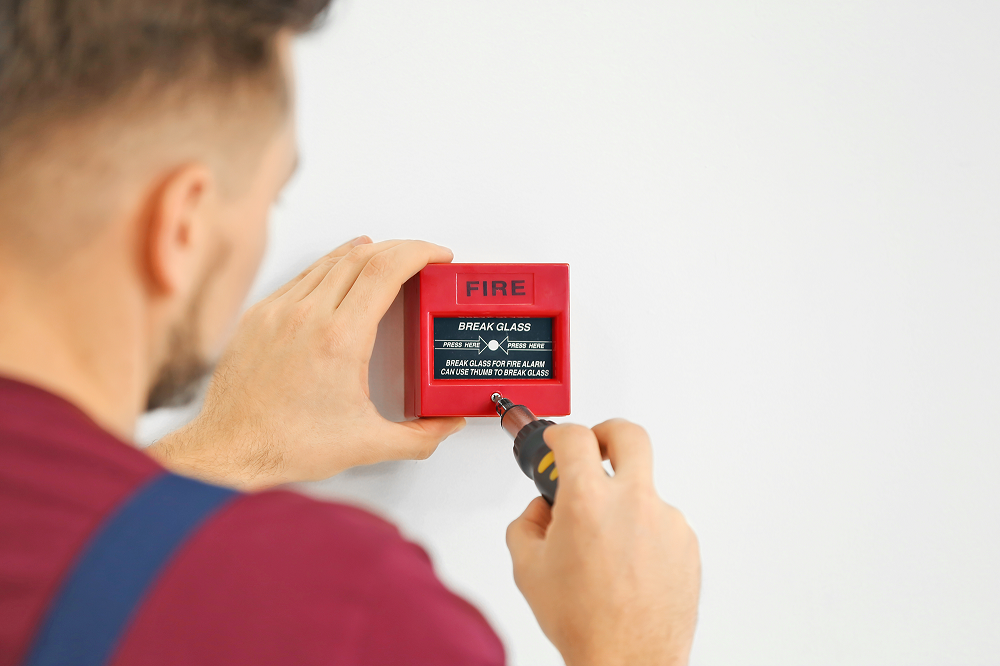Chris McGinn: Fully understanding your stock is key to fire safety
With new heat and smoke alarm legislation coming into effect in February and changes to fire standards within Scottish building regulations likely to be made later this year, Chris McGinn at PfH Scotland believes there are three priorities that housing providers in Scotland must focus on.

Chris McGinn
Fire safety regulations in Scotland are changing. New heat and smoke alarm legislation recently came into effect, amendments to external wall fire standards are likely to be made later this year and the Scottish Government’s Single Building Assessment cladding review programme will move from pilot to full scheme over the next 12 months.
As a result it’s crucial that asset and procurement managers understand this assortment of new rules so they can bring their social homes up to standard. But before upgrades are made, there is a central challenge that many Scottish housing associations and councils need to get to grips with: fully understanding their stock.
A lack of awareness about the size, fabric, compartmentation and fittings within tall buildings means that many social landlords just aren’t aware of all the risks.
Having spoken to fire safety specialists in the sector, it feels like there are three initial actions that housing organisations must take to get a handle on this issue.
Join up building information
Post-Grenfell, it’s widely acknowledged that gathering and storing high quality, comprehensive data about the make-up of assets is key to building safety. The problem, however, is that recording and managing building information hasn’t always been a priority for social landlords.
Some housing organisations still hold incomplete or out of date records about the fabric and fittings of their high-rises, and their condition, maintenance and repairs history. This means that the crucial ‘golden thread’ of building data isn’t always documented or available for everyone who needs it – from responsible people and fire services to procurement officers and teams responsible for preparing personal emergency evacuation plans (PEEPs) for disabled residents.
More must be done to empower staff to accurately collect and update information about assets. Developing trust and knowledge about data through the right employee culture, communications and training is hugely important – people must understand their link in the chain.
Applying consistent data rules and standards is also critical, helping with auditing and transparency, so source data can be trusted.
Automating data management is another way to join up the all-important golden thread. By using automated systems to amass information from different sources and present it in a unified way, there is less chance that silos of disconnected data spring up.

Get fire compartmentation right
More must be done to identify deficiencies in the way that housing providers currently divide their buildings into fire compartments to limit the stress of fire.
The problem is that high-rises naturally require services, from cables and power sockets to heating and water pipes. This means that openings have to be created in secure floors, compromising compartmentation status.
Whenever an upgrade is made, a building warrant must be applied for, showing the works conform to fire safety standards. However, this doesn’t always happen, and cables and pipes can often penetrate walls without the necessary fire-proof collars or fillers.
More training is key, so housing associations and local authorities understand the risk of poor compartmentation, the mitigation measures, the responsibilities of different stakeholders and necessary inspection regimes.
Asset managers have an important part to play, ensuring that fire compartmentation gets the attention it needs within an organisation – through training and communications for all relevant staff and external suppliers. Buying teams also must also take responsibility, making sure the right fire-resistant products are procured and any companies contracted to make upgrades are complying with standards.

Find new ways to understand buildings
The sheer scale of gathering safety-critical information about high rise buildings means that social landlords need to explore new, non-traditional solutions.
For example, a number of housing associations in Scotland are using artificial intelligence and thermal imaging to spot dangerous gas, oxygen or petrol canisters being taken into high rise buildings and alert property managers.
Technology to tackle this and a range of other building safety issues already exists and housing providers in Scotland need ways of identifying and engaging the emerging SMEs behind these solutions.
Innovation communities such as the Proptech Innovation Network can help, putting social landlords in touch with the right suppliers and helping them to compliantly procure fledging tech services.
Ultimately, it’s not just an asset’s fabric and fittings that housing providers must better understand, it’s the individuals who live there. A person-centred approach is fundamental to fire strategy – for instance, any detection system must be appropriate for a building’s residents and their needs. That’s why it’s so important for people to be at the heart of all building safety actions taken by Scottish social landlords going forward.
- Chris McGinn is commercial manager at PfH Scotland. Find out more about PfH Scotland’s Fire Safety Consultancy Framework here.







